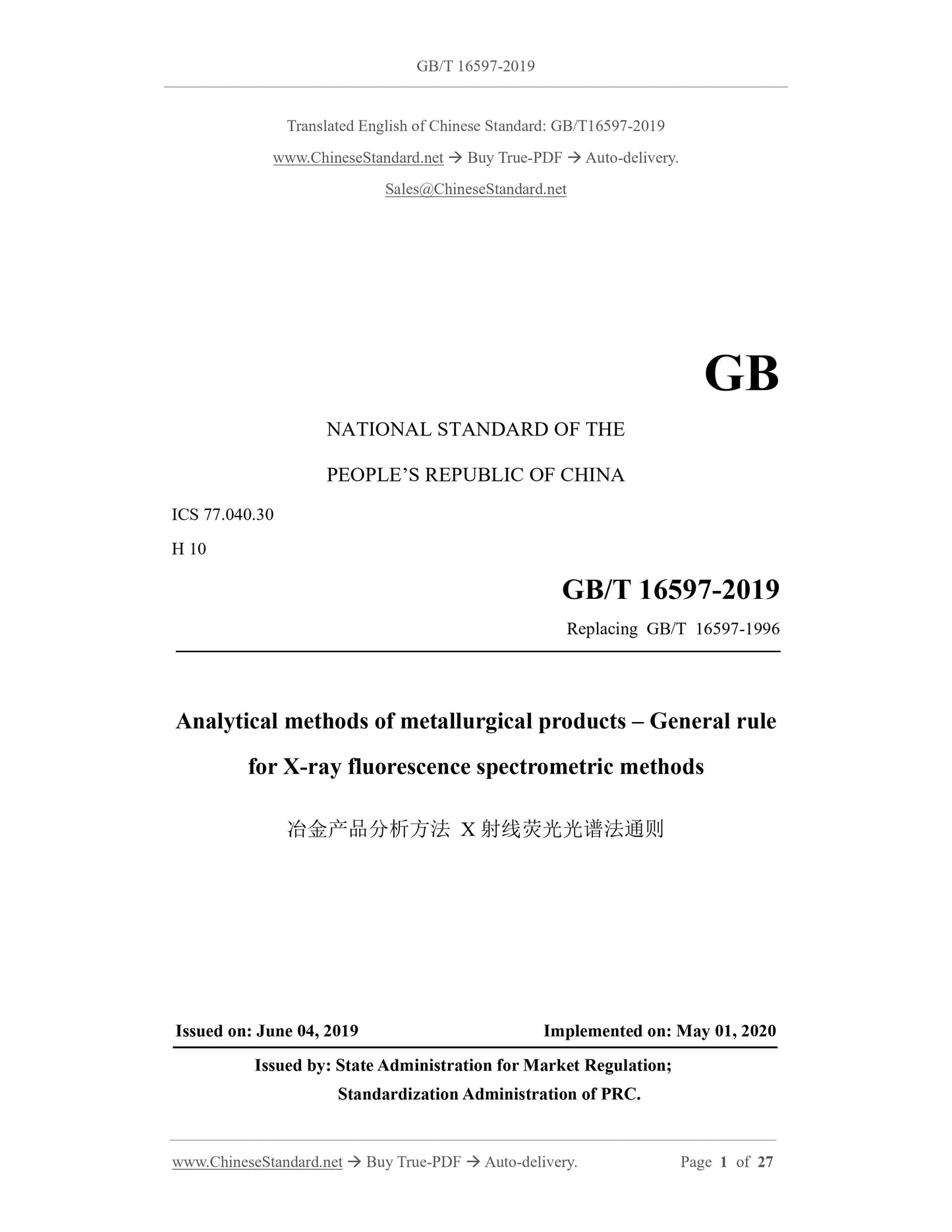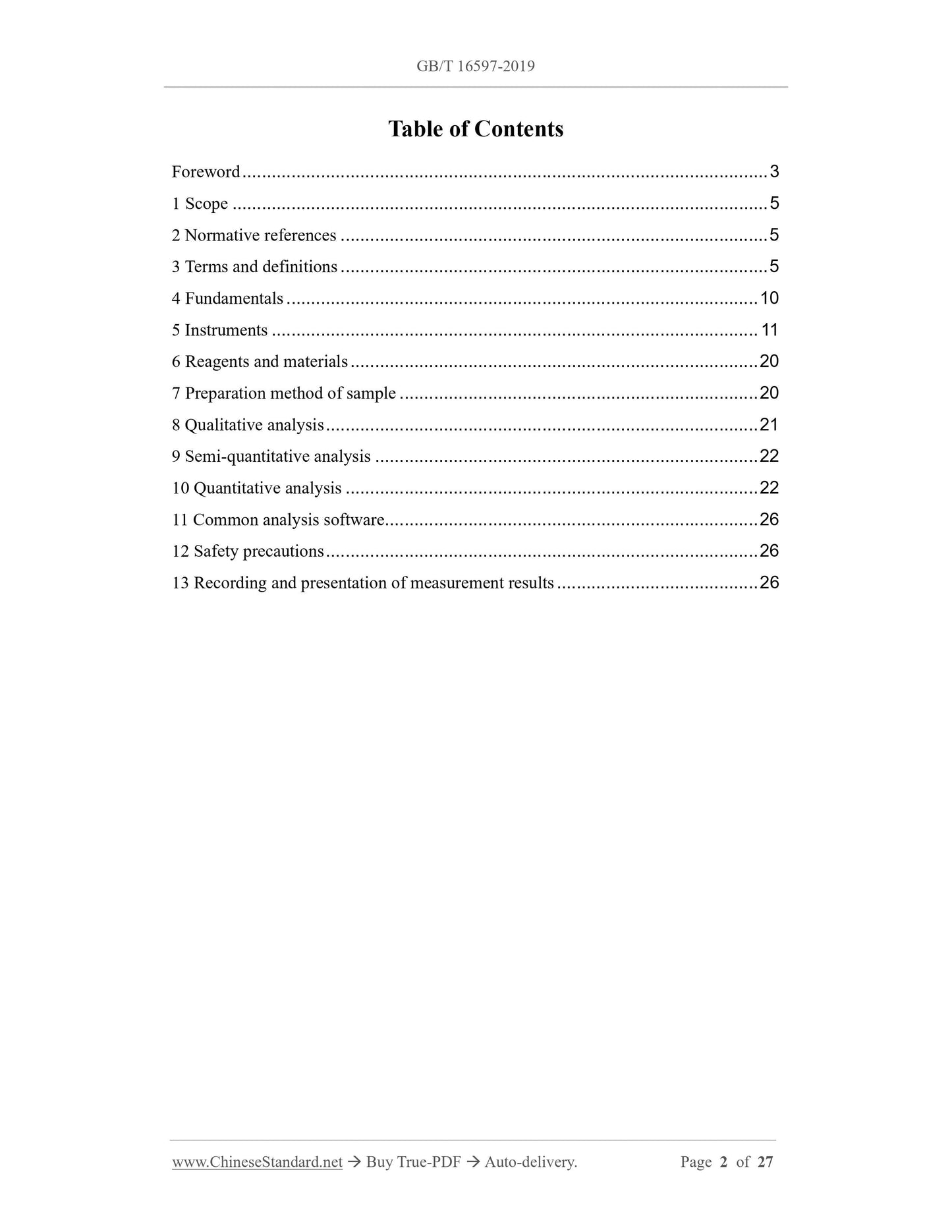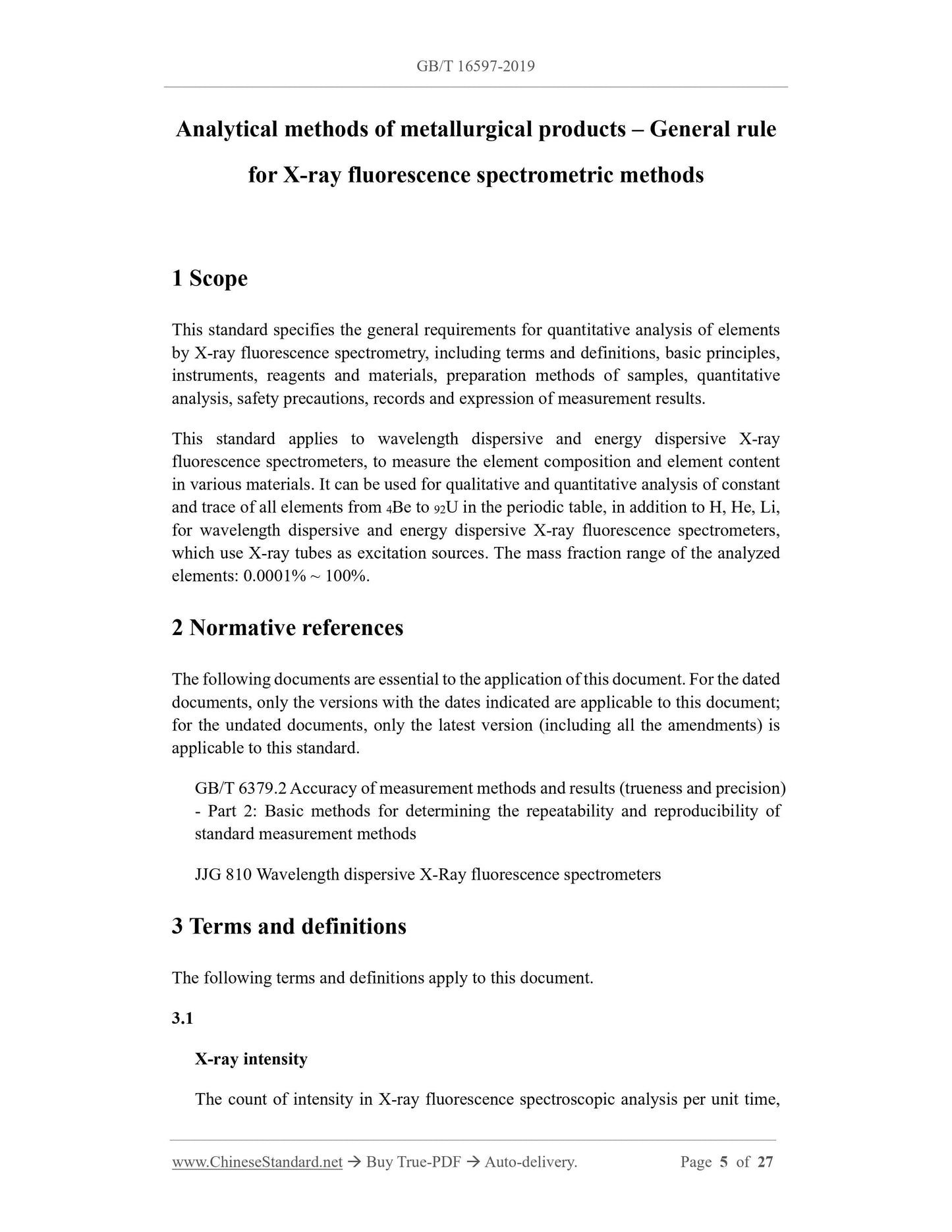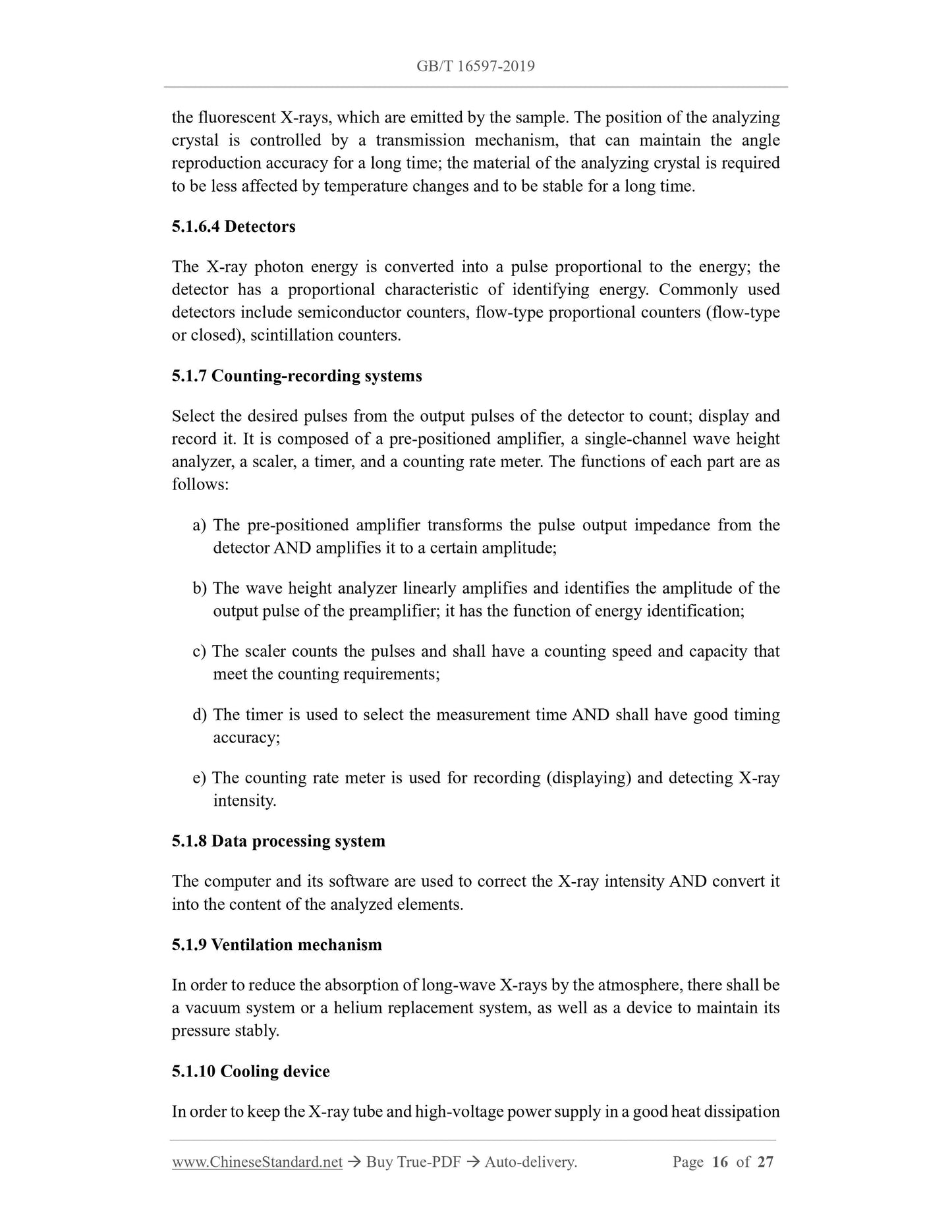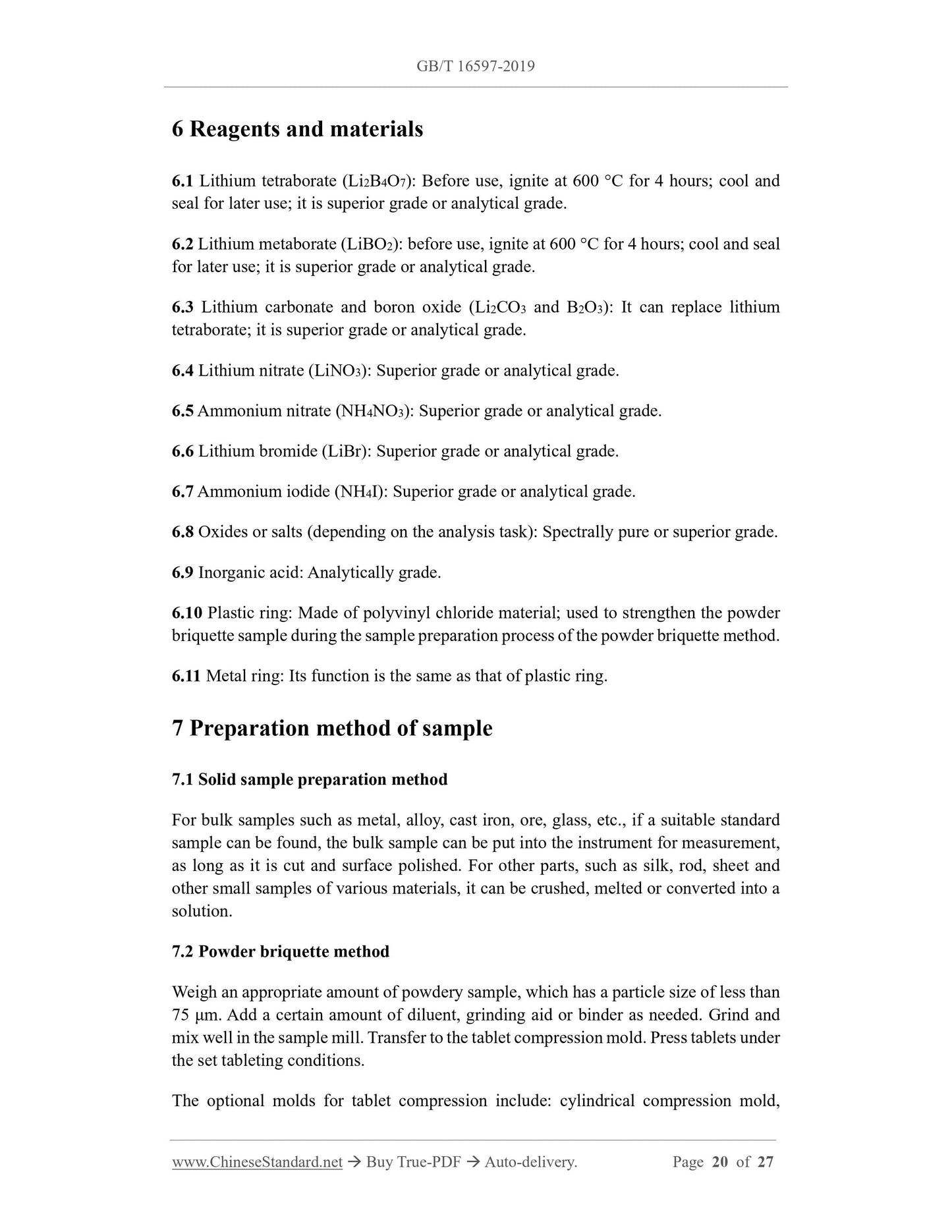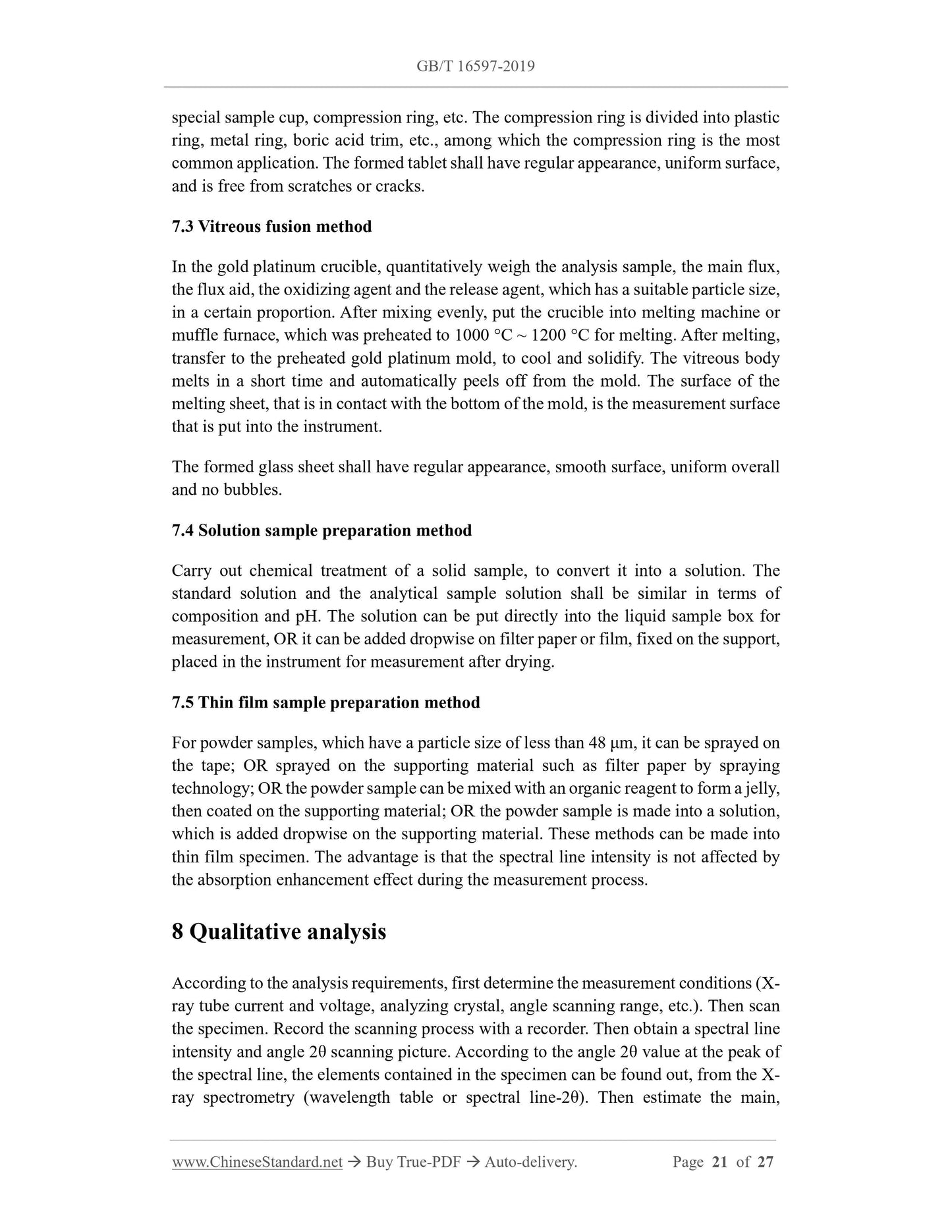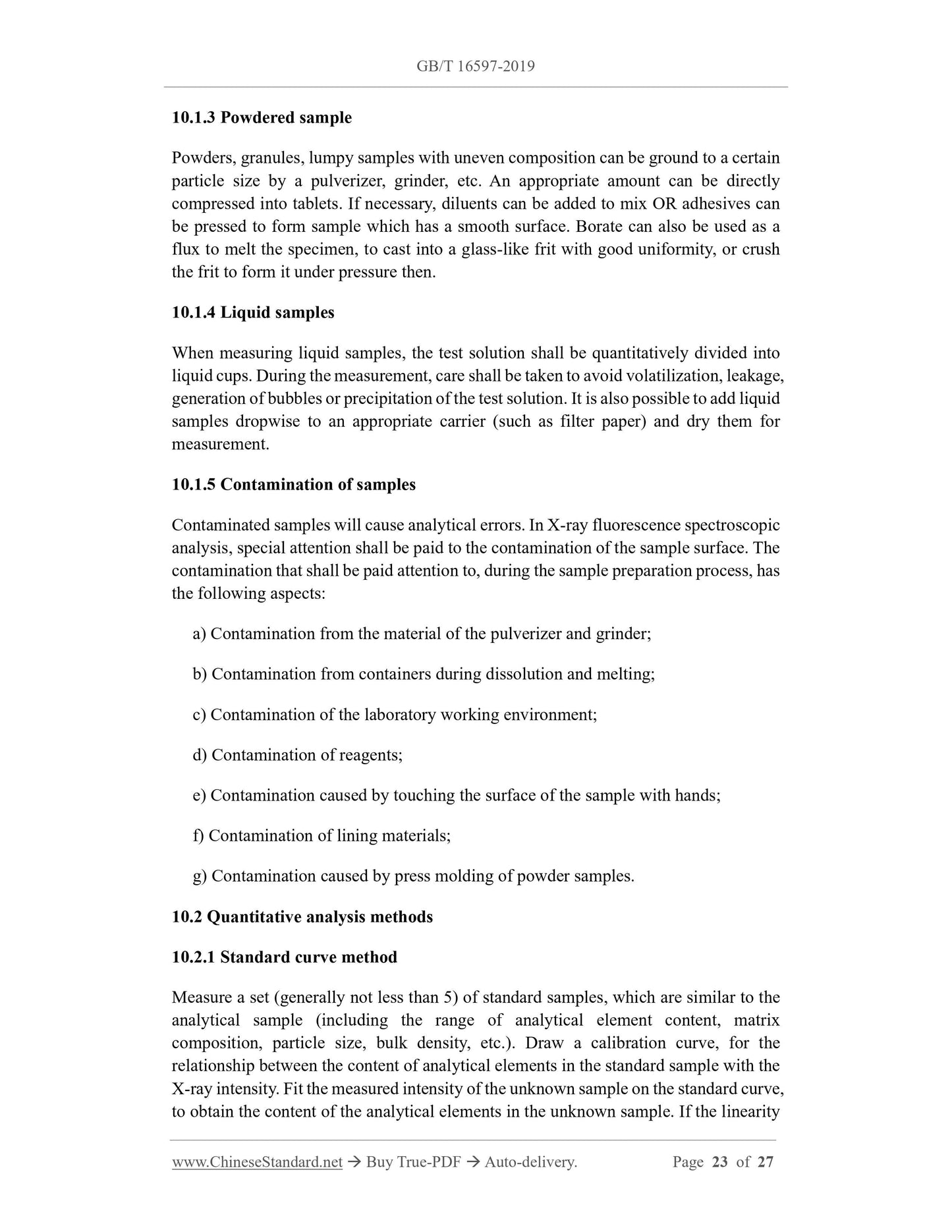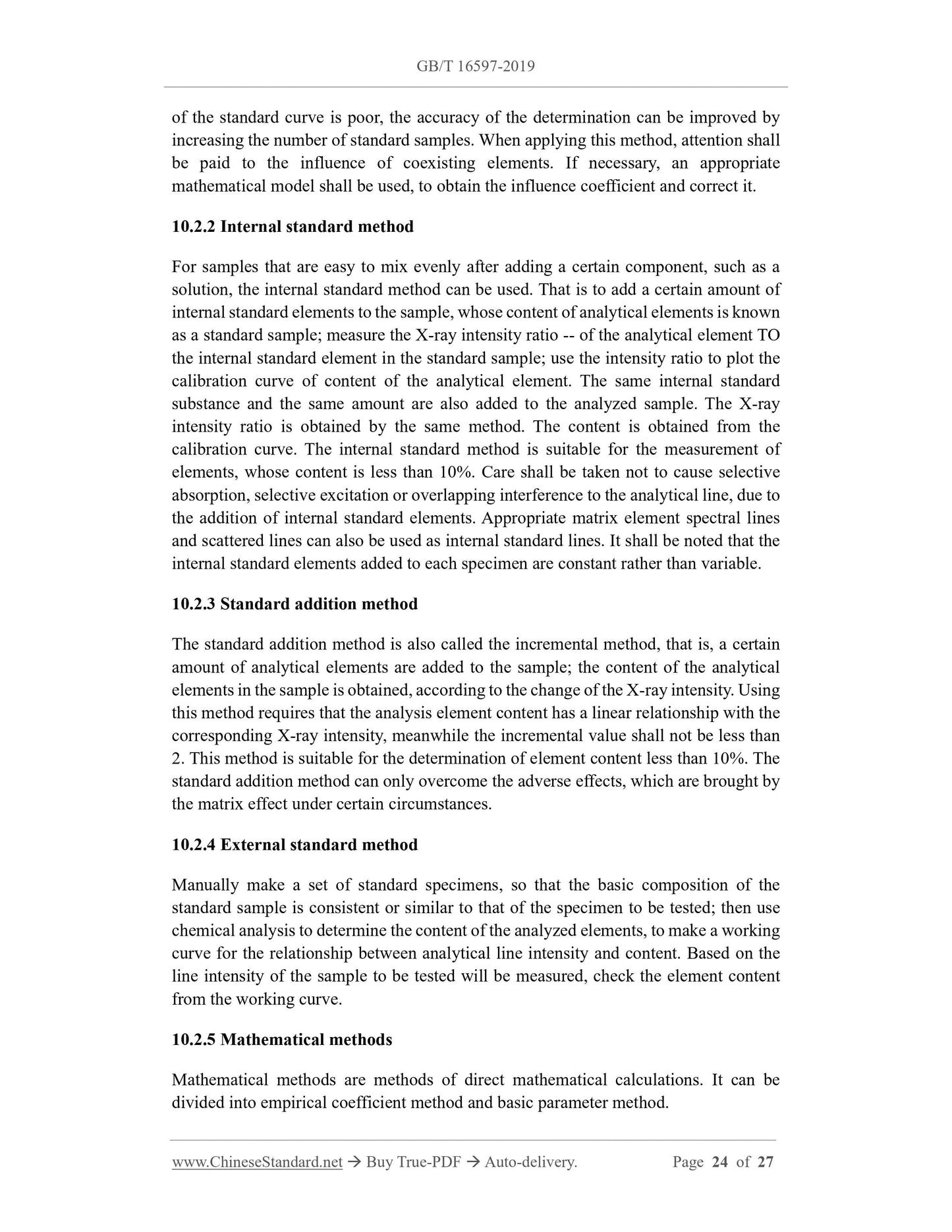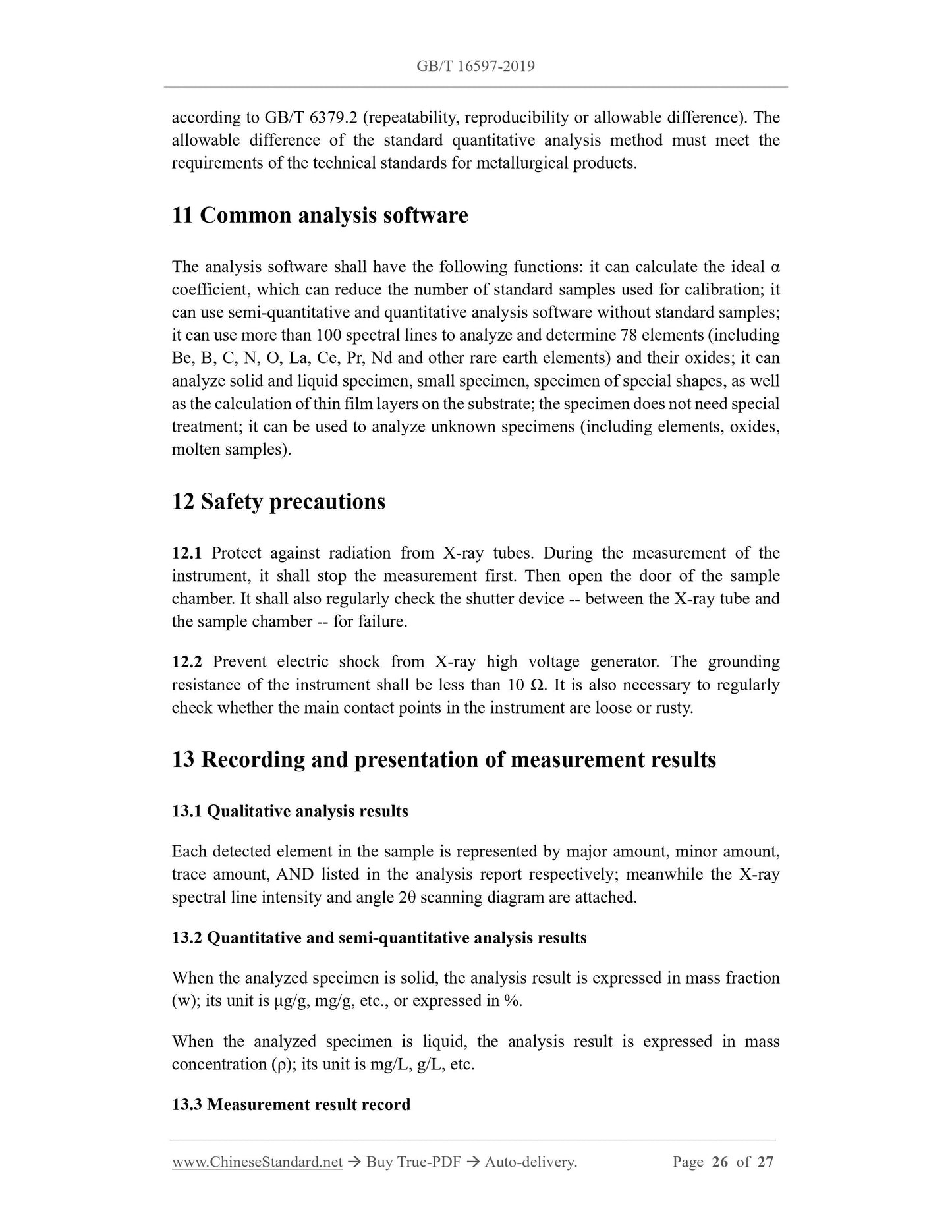1
/
of
9
www.ChineseStandard.us -- Field Test Asia Pte. Ltd.
GB/T 16597-2019 English PDF (GB/T16597-2019)
GB/T 16597-2019 English PDF (GB/T16597-2019)
Regular price
$260.00
Regular price
Sale price
$260.00
Unit price
/
per
Shipping calculated at checkout.
Couldn't load pickup availability
GB/T 16597-2019: Analytical methods of metallurgical products - General rule for X-ray fluorescence spectrometric methods
Delivery: 9 seconds. Download (and Email) true-PDF + Invoice.Get Quotation: Click GB/T 16597-2019 (Self-service in 1-minute)
Newer / historical versions: GB/T 16597-2019
Preview True-PDF
Scope
This standard specifies the general requirements for quantitative analysis of elementsby X-ray fluorescence spectrometry, including terms and definitions, basic principles,
instruments, reagents and materials, preparation methods of samples, quantitative
analysis, safety precautions, records and expression of measurement results.
This standard applies to wavelength dispersive and energy dispersive X-ray
fluorescence spectrometers, to measure the element composition and element content
in various materials. It can be used for qualitative and quantitative analysis of constant
and trace of all elements from 4Be to 92U in the periodic table, in addition to H, He, Li,
for wavelength dispersive and energy dispersive X-ray fluorescence spectrometers,
which use X-ray tubes as excitation sources. The mass fraction range of the analyzed
elements. 0.0001% ~ 100%.
Basic Data
| Standard ID | GB/T 16597-2019 (GB/T16597-2019) |
| Description (Translated English) | Analytical methods of metallurgical products - General rule for X-ray fluorescence spectrometric methods |
| Sector / Industry | National Standard (Recommended) |
| Classification of Chinese Standard | H10 |
| Classification of International Standard | 77.040.30 |
| Word Count Estimation | 18,148 |
| Date of Issue | 2019-06-04 |
| Date of Implementation | 2020-05-01 |
| Issuing agency(ies) | State Administration for Market Regulation, China National Standardization Administration |
Share
